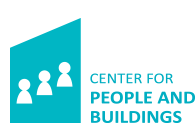EFMC 2010 - The Added Value of FM - Different Research Perspectives
May 2010 | Per Anker Jensen, Theo van der Voordt, Christian Coenen, Daniel von Felten, Anna-Liisa Lindholm, Susanne Balslev Nielsen, Chaiwat Riratanaphong and Mirjam Schmid
Research paper European Facility Management Conference 2010.
Purpose
This paper aims to present and compare research perspectives and theoretical reflections from a variety of academic fields on the concept of Added Value of Facilities Management (FM).
Theory
The starting point is the so-called FM Value Map, which was presented in a paper by Jensen (2009) at the research symposium at EFMC 2009 in Amsterdam.
Methodology
Literature reviews of the most influential journals within the academic fields of FM, Corporate Real Estate Management and Business to Business Marketing; reflections on EFMC-presentations; discussions between participants of an EuroFM research collaboration group working on a further exploration and testing of the FM Value Map.
Findings
The research shows a number of different definitions and focus points of Added Value of FM, dependent on the academic field and the area of application. The different research perspectives explored a holistic view on the added value of FM by the integration of an external market based view (with a focus on the aimed output) and the internal resource based view (with a focus on the input from FM and RE). Good relationship management and building on trust shows to be equally important as delivering the agreed services. In order to measure the multi-dimensional components of adding value both qualitative and quantitative approaches are needed.
Originality/value
Usually the concept of Added Value is discussed from a mono-disciplinary point of view. Based on this international collaboration a more complete picture will arise. The different backgrounds of the authors add value to an increased understanding of the added value of FM by comparing and testing different ways of conceptualising this concept. This is of great importance to FM-research and evidence-based FM as a sound basis for the long term recognition of FM.
Keywords
Facilities Management; Corporate Real Estate Management; Added Value; Strategic Mapping;
Service Marketing; Relationship Value.
